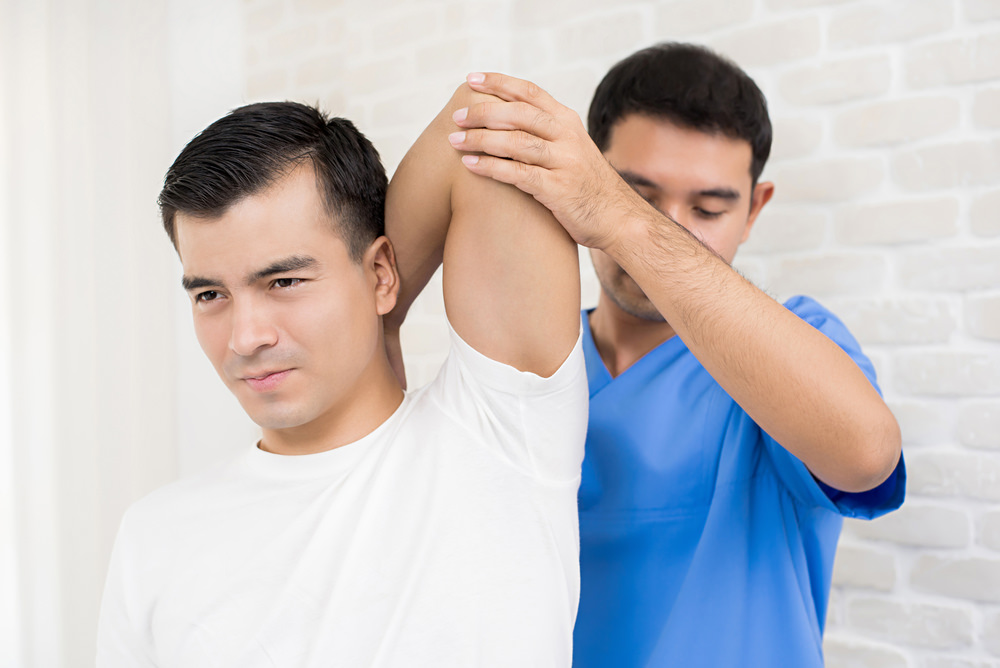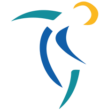Shoulders

Winter already!!! I know we probably can’t complain as we did have an extended warmer period but it seems we bypassed Autumn and went head first into Winter. Enough about the weather!
This newsletter is dedicated to the shoulder. The shoulder is a complex joint that terrifies a lot of new physio graduates. The reason for this is that there are many structures that form part of the shoulder and therefore there are many things that can go wrong. Usually injuries to the shoulder resolve fairly quickly and respond very well to exercises as most problems are due to muscles not working as they should. I will touch on some basic anatomy and then common problems involving the shoulder, followed by our regular exercise page that will focus on strengthening exercises for shoulder muscles.
Enjoy
Anatomy
The shoulder is made up of three bones: the collar bone (clavicle), the shoulder blade (scapula) and the upper arm (humerus). The shoulder blade forms the socket part of the shoulder, the humerus forms the ball and the clavicle provides the “strut” between the shoulder and sternum (breastbone) and it also protects the nerves found in front and side of the neck. The socket is very shallow allowing for a great range of movement but this comes with a disadvantage of poor stability.
Stability of the shoulder therefore relies on the ligaments (attach from bone to bone) and most importantly on the surrounding muscles. The main muscle group that most people have heard of is the rotator cuff muscles. This is a group of four muscles that surround the shoulder joint and provide most of the stability for the joint.
Other structures include the bursa which is a fluid filled sac that sits under the clavicle and provides cushioning.
Possible mechanisms of injury
The most common reason for shoulder pain is an injury to a muscle which often leads to muscle weakness. When we have muscle weakness it greatly alters the way the shoulder works which places structures under stress leading to injury and therefore pain. Muscles can weaken after being directly injured by straining or tearing them. This may be caused from lifting, pulling, reaching or overhead activities.
Another cause is poor posture, for example round shouldered. This is a more casual process that may lead to muscles being stretched and used incorrectly which leads to fatigue of the muscle which then causes damage to the muscle. Once one muscle weakens the balance of the four is altered which leads to other structures being strained, this may be a ligament or bursa or another muscle which leads to further damage and more pain.
Types of injury
The most common injuries of the shoulder we see here are muscle strains and tears. The most common muscle involved is the supraspinatus muscle which is one of the rotator cuff muscles. This will lead to pain during movements such as lifting the arm out to the side, lifting weights.
Another common injury is impingement of the shoulder. This is where the muscles aren’t
working well and therefore the ball of the shoulder pushes up into the bony part (acromium) and causes pinching of the soft tissues in between the ball and acromium. This may lead to pain in front of the shoulder and often down the arm.
Frozen shoulder is another complaint of the shoulder. A lot is still unknown about this condition. It is thought that it is an auto immune condition, where the body’s immune system attacks the shoulder capsule. This leads to swelling and pain of the shoulder which leads to a loss of movement particularly with rotation eg doing up bras, putting on coats, reaching for the seatbelt. It can be very painful, especially at night.
Other injuries include dislocations, AC joint dislocation and breaks.
Treatment
Our treatment starts with a thorough assessment to work out what is going on. Once we have narrowed down the issue we may treat it locally first to reduce any local inflammation or tightness. This will include stretches to the actual joint and surrounding muscles. We quickly then move onto working muscles which may have weakened and begin strengthening exercises. Depending on the severity of weakness we may start with very simple exercises. After surgery the muscles need assistance from the other arm to begin to move and strengthen. We then may proceed to gravity resistance, weights and theraband resistance all the way to high performance. Athletes needs a high resistance high repetition program to get them back into their sport at a competitive level. People with frozen shoulders may need to be referred on to have a procedure called hydrodilatation.
Some exercises you may want to start on.
In summary
Now I’ve spoken about lots of different aspects of shoulders and there’s lots more I could talk about. There are many different surgical procedures that we provide rehabilitation for. If you have any issues about your shoulder give us a call.
Don’t forget to look us up on Facebook and Instagram!! And of course like us and follow us 😊
